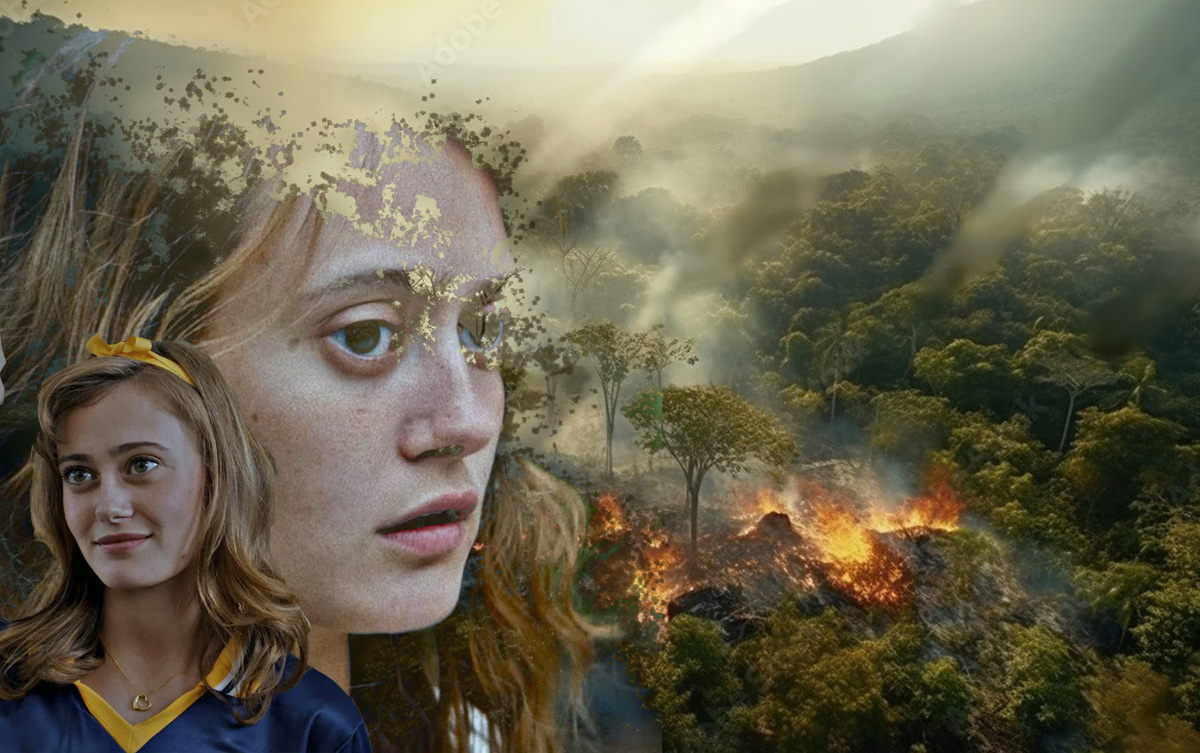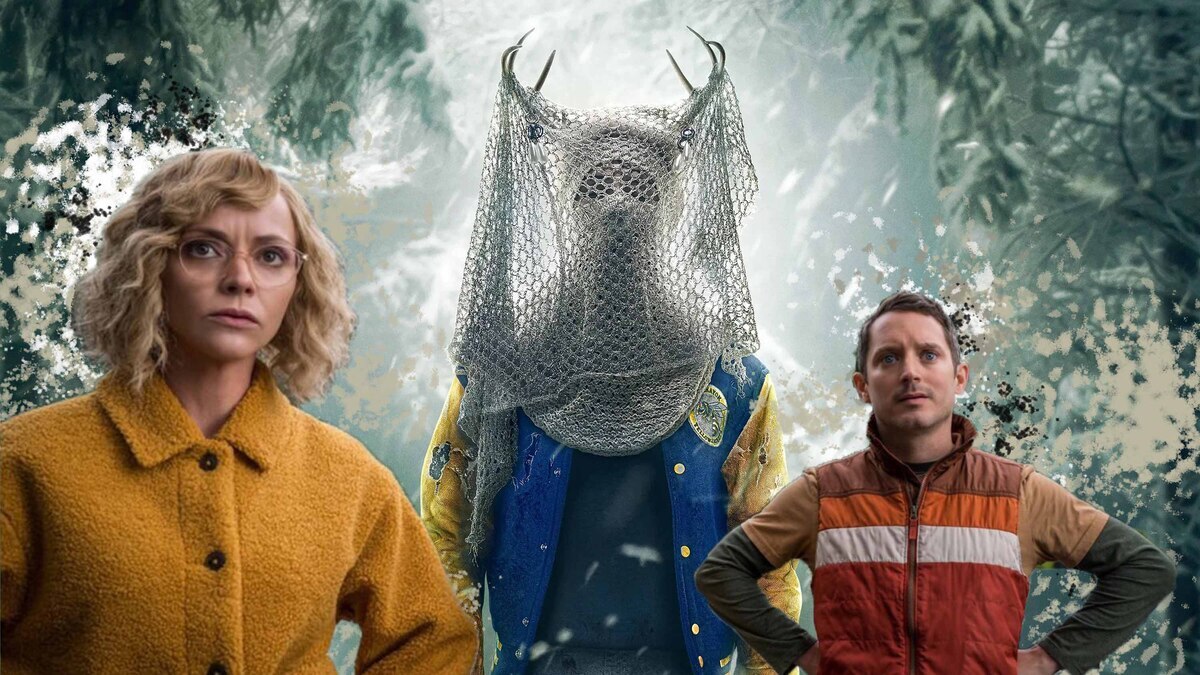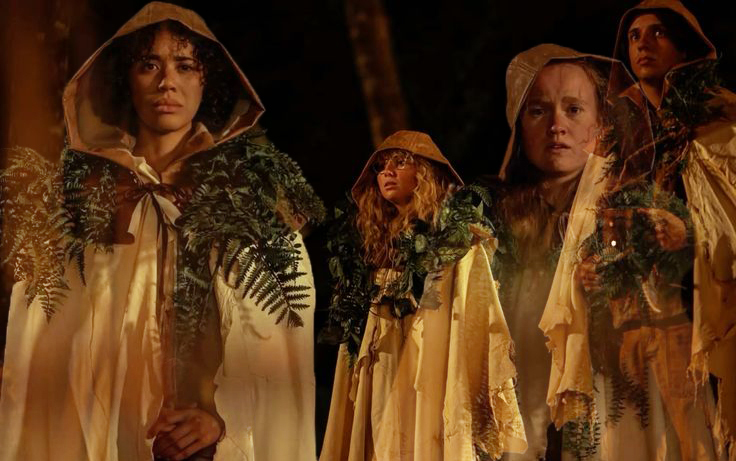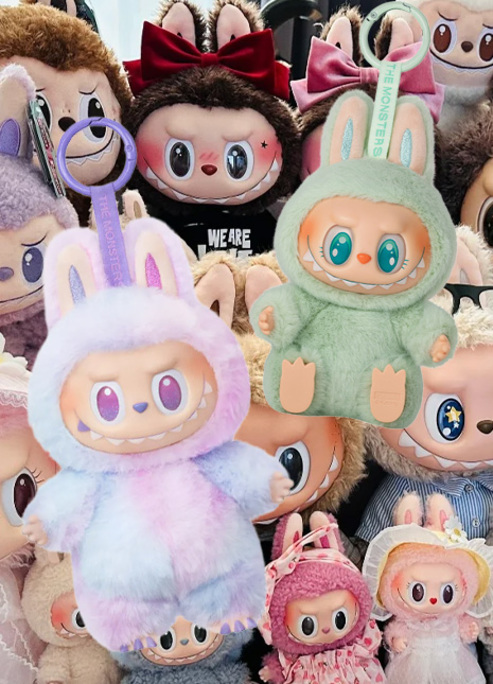
Dressing Like A Yellowjacket
Wilderness couture and the aesthetics of trauma - spoilers ahead.
Yellowjackets (2021) is a critically acclaimed series that weaves together gory survival horror, psychological drama, and dark humour. The narrative follows a time jump narrative of a high school girls’ soccer team after their plane crashes in the wilderness, as well as their adult lives decades later, showing the fracturing inescapability of the trauma they suffered. Beyond dialogue and plot, clothing becomes a key narrative device. Each season’s costume design reflects not only environmental pressures but also the formation of identity, community, and eventual ritual.
Season 1: Establishing Aesthetic and Fragmented Identity

Costume designer Marie Schley set the visual tone in the first season, blending familiar 1990s grunge aesthetics with unsettling pagan symbolism. Initially, the team’s soccer uniforms, and denim jackets signal suburban adolescence – the iconic blue-and-yellow varsity jackets embody school spirit and group unity.
Once stranded, these garments acquire new meanings. Uniforms are torn, patched, and shared, marking group survival over individuality. Additionally, by the finale, the introduction of antler crowns, skull masks, and lace-draped rituals foreshadows the community’s descent into tribalism. The blending of everyday ’90s looks with ritualistic elements illustrates the erosion of innocence, placing fashion as a marker of psychological transition.
Season 2: Harsh Winters and High-Fashion Feralism

In the second season, Amy Parris inherited costume design, tasked with visually representing survival during winter. With only spring clothing salvaged from the crash, the girls layered garments into bizarre, apocalyptic ensembles. This “haggard dress” paradoxically carried a couture quality: mismatched prints and textures accidentally coordinated into runway-like compositions.
Here, clothing reveals simultaneous necessity as well as adolescent self-consciousness. Even in feral conditions, the teenagers remain aware of appearance, striving to dress stylishly while piling on tattered layers. Notably, Natalie’s hunter ensemble – leather jacket reinforced with deer hide and seatbelt straps – demonstrates creativity, resilience, and the persistence of identity through dress.
Meanwhile, the adult timeline mirrors these traumas. Misty’s “hunter clown” aesthetic mixes camouflage with relentless, garish self-presentation. Additionally, Shauna’s unassuming plaid jackets and sweaters conceal violent impulses all the while Lottie re-emerges as a cult leader. Her commune dresses in heliotrope purple to symbolize unity, while she herself wears gold and orange, marking her authority through sartorial separation. Clothing, across timelines, encodes power, memory, and hierarchy.
Season 3: Ritual Refinement and Full Circle Revelation

Schley returned for the most recent season, pushing fashion into ritualistic territory. Set after a brutal winter, the girls’ clothing now integrates rabbit pelts, vinyl from airplane seats, and reconstructed blankets, creating garments that feel both strategic and ceremonial. This is the “season of the witch”: a summer solstice palette where costumes signal hierarchy and spiritual power.
The Antler Queen’s cloak exemplifies this evolution. Once improvised, it becomes richly detailed, adorned with bones, hair, and crochet, a terrifying visual of authority. Shared clothing continues as a theme: Shauna wearing Jackie’s shirt, and Misty adopting Natalie’s motorcycle jacket in adulthood. This echoes the ways garments serve as both armour and symbolic inheritance. Furthermore, coach Ben’s deteriorating polos embody psychological decline, stitched with starvation and trauma.
Across three seasons, Yellowjackets uses fashion as fragmented storytelling. Clothes are communal, shared, and reshaped: embodying both survival and loss of self. They progress from suburban nostalgia to apocalyptic layering, and then to ritualized authority. In the adult timeline, fashion continues as a mask – suburban sweaters, cult robes, pastel nurse scrubs – that conceals darker truths.
Ultimately, Yellowjackets demonstrates that fashion is more than costume; it is character, memory, and trauma externalized. To dress like a Yellowjacket is to wear the weight of survival: stitched in denim, dirt, blood, and bone.











